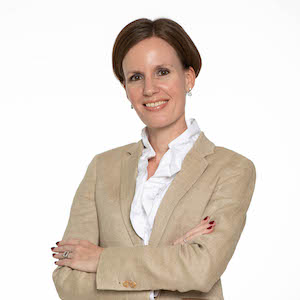Could you share a little bit about who you are and what you do here at OML Consulting?
Miriam: My name is Miriam van der Horst, a partner of OML Consulting, based in Hong Kong.
I am a global learning expert with 15 years of experience across Asia Pacific, primarily focused on leadership development, with a strong emphasis on Emotional Intelligence and Cultural Intelligence. In the OML spirit of ‘never stop learning’, I prepare clients for the future of work — how can they keep up with the constant change around them and continue to add value to their business, their teams, and their own role?
What is Cultural Intelligence and why is it important?
Miriam: To really understand the power of cultural intelligence you have to ask yourself the question; how does culture impact the way we see ourselves and the world around us? We are strongly influenced by our own cultural groups that are made up of individuals with similar understandings and behaviours. These groups shape our expectations on how to interact with each other, how to manage work together, and how to think about problems and come up with solutions.
Surely it will come as no surprise that, these days, most companies operate in a truly global environment where team members have daily interactions with individuals from other cultures, with values, norms, practices and expectations different to their own. This reinforces the need to think and function with a global mindset, and feel comfortable doing so.
It is impossible for us to be an expert on every single culture represented by individuals with whom we interact. However, a step in the right direction is to first become aware of cross-cultural differences in working methods and behaviour, and then be able to overcome these differences by knowing how and when to adapt.
Individuals who possess a high level of cultural intelligence are very good at getting along with people from other cultures and build positive interpersonal connections. Their collaborative mindset encourages qualities such as tolerance, trust, respect and teamwork.
In any industry, the combination of all of these helps an organisation gain a competitive edge through increased productivity, innovation, inclusion, talent retention and team member happiness.
How can companies better leverage on Cultural Intelligence in the workplace?
Miriam: Apart from formal cultural intelligence training and coaching sessions, there are other practical ways to support team members in building their cross-cultural competence. One way is to facilitate regular discussions to allow employees to share their experiences that may have shaped their values, beliefs and ideas. Culturally intelligent leaders should also maintain clear standards of accountability around inter-cultural behaviour to ensure team members are involved and move in the same direction.
What is a resource that you would recommend for an individual seeking to know more about Cultural Intelligence?
Miriam: A valuable resource to learn more about how to navigate cultural differences and get things done across cultures is the book “The Culture Map” by Erin Meyer. It provides a model for decoding how cultural differences impact international business, backed-up with engaging, real-life stories around global teamwork and international collaboration.
About the Author:

Miriam van der Horst is a partner of OML consulting with 15 years’ experience across Asia Pacific, primarily focusing on leadership development and cross-cultural learning. She helps her clients, ranging from first-time managers to business executives of multinational companies and government departments, get better at dealing with change and being flexible enough to adapt with knowledge and sensitivity. Having lived and worked in the Netherlands, Switzerland, the UK, Vietnam, Australia, China, Singapore, and now Hong Kong, Miriam works comfortably, respectfully and effectively with people at different organisational levels and from diverse backgrounds.
